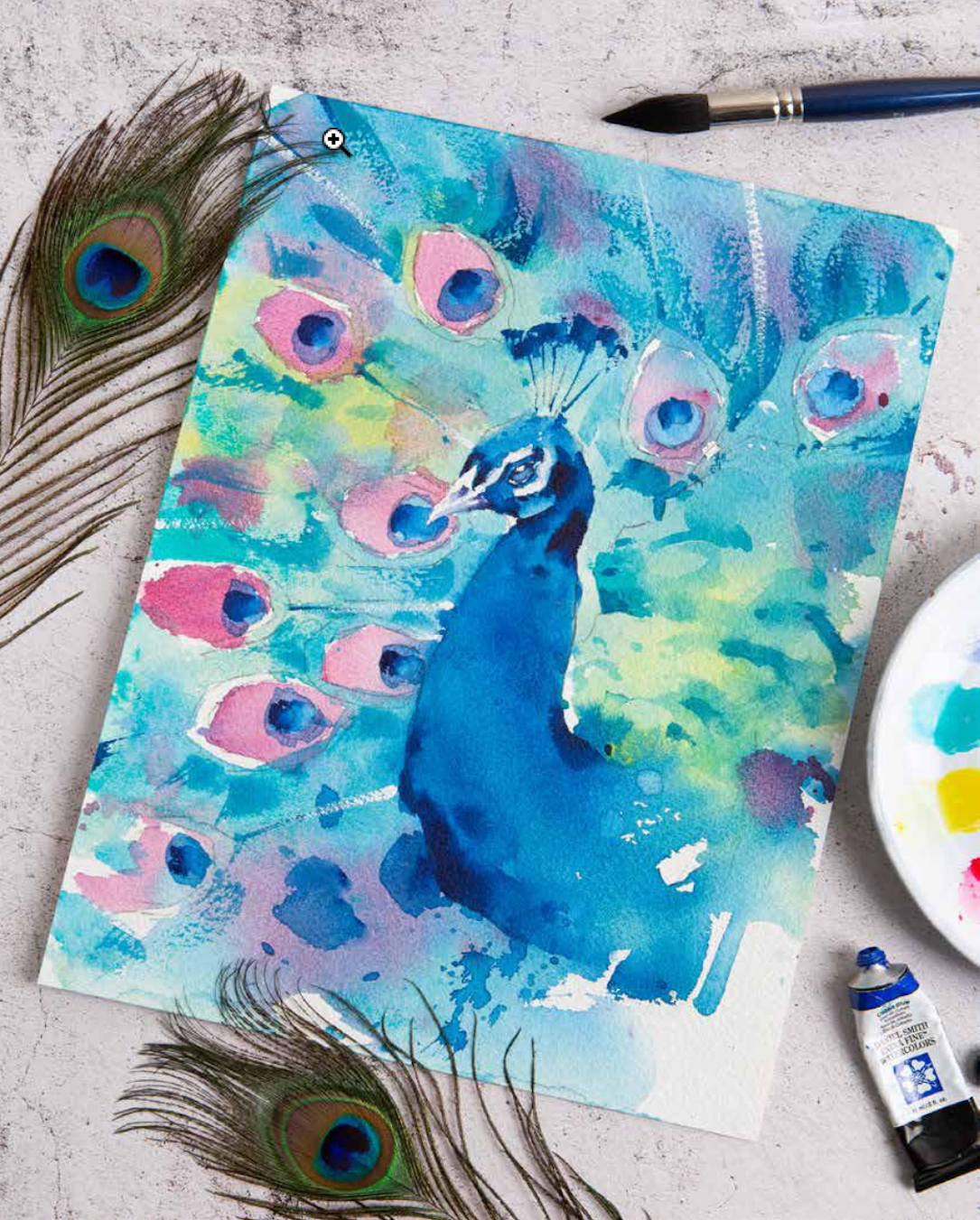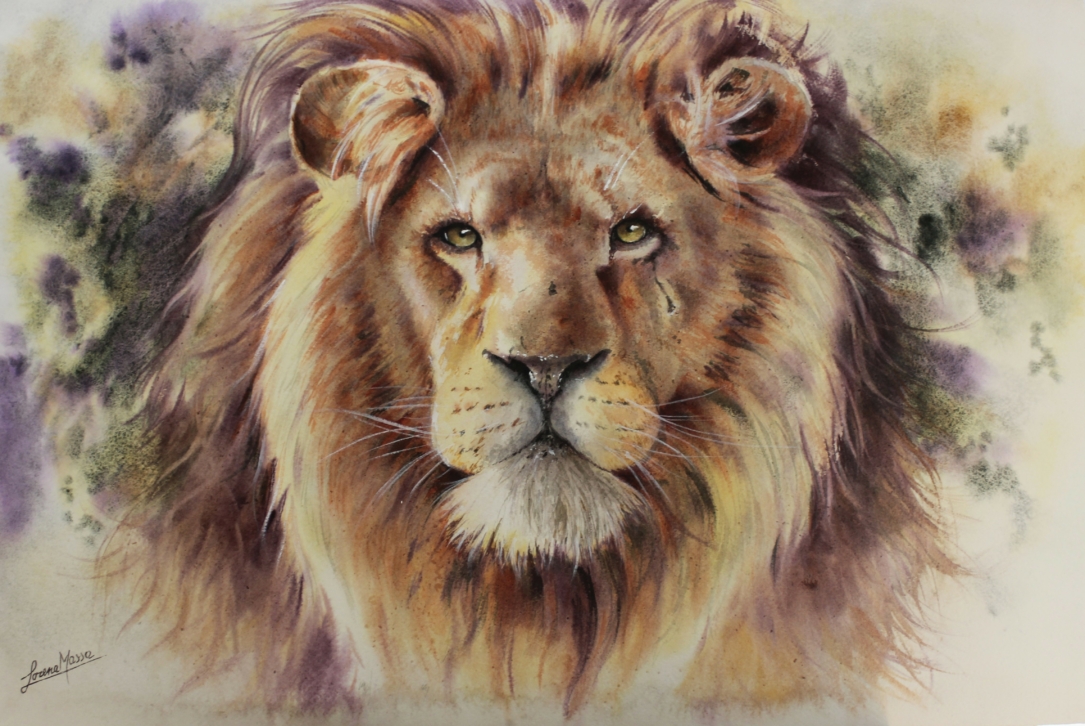Tom Shepherd is the author of Simply Paint Birds, a how-to watercolor book that includes a free DANIEL SMITH dot card.
Enjoy getting to know him a bit better!
Describe your art journey – any milestones along the way?
I always loved drawing when I was younger (though I did not enjoy painting at all). Having ended up with fairly poor art grades at school, I went down the University route to study physical geography. I continued doodling through these years, but never took art seriously; yet upon completion of my degree, I made a seemingly odd choice to become a professional artist – with absolutely no art or business training! That was nearly 18 years ago and somehow I battled my way through endless mistakes to where I am now.
I kicked off by doing anything and everything, from logo and poster designs, to painting commissions on musical instruments and motorcycle helmets. This is where I pitched myself initially as an artist, but a few chance encounters took me into the fine art world. I dived into oil painting and was immediately obsessed with not only the medium, but the whole oil painting world – history and lineage. Whilst I was earning a living, it took many more years to develop my artistic voice and for my career to really gain momentum; but this shift from logos and musical instruments into a more traditional medium and subject matters (which I previously thought of as outdated and “fuddy duddy” – how wrong I was!!), was a serious turning point.
A few years later I started teaching and found real joy in it. This took me into acrylics and started a probably five year long love affair with the medium. I moved around various studios and simply tried to get my art in front of as many people as possible. It was a hard but extremely exciting time. A few years further on and serious issues with my back and shoulder (now resolved) meant I could not paint upright at an easel, with only a maximum of 15 – 20 minutes flat before the pain was too much; cue watercolour! What started as a sketching medium is now my medium of choice 99.9% of the time. Watercolour is what I have become most known for; where I really started to find my own unique voice as a painter; and the medium which skyrocketed my career to the next level, finally giving it some direction and momentum.
Who knows, I may be a sculptor in another 10 years, but for now watercolour remains extremely engaging and a huge amount of fun, and there is so much more I want to do with it!
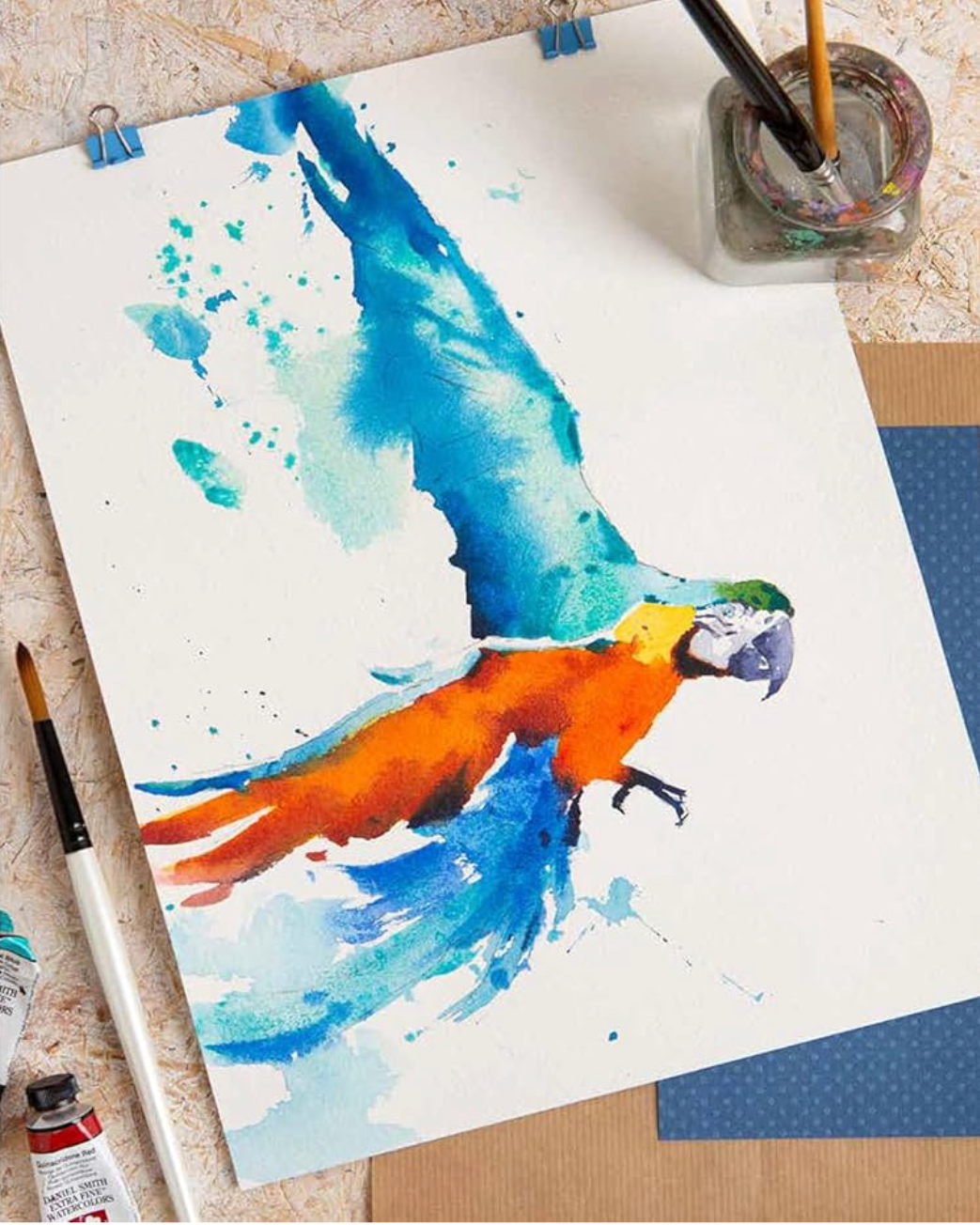
What were some of the immediate differences you noticed as you first began to move between mediums?
The markers I used in my early days were great as they are extremely easy to use, the colours are all premixed and they felt very familiar. I still love them, and do play with them here and there. For the way I was working, I started to find the limitations a little frustrating and was also craving something more expressive in terms of look. In fact, I started using the markers to create artwork that looked like it was more painterly and done with a brush!
Moving to oils after this felt so liberating. It was so fluid and juicy, so much fun, no limitations and a whole world of contemporary and past artists to draw inspiration from. It was exciting. Those elements are still there of course, but I moved on. Oils can be a little messier, and having worked in small studios, the slow drying times made storage a little trickier. But oils are very hard to beat for that luscious feeling of mixing thick paint and laying down a big juicy brushstroke.
Moving to acrylics was initially frustrating. However, as with most mediums, the initial cons actually became the pros! The quick drying time provides so much flexibility, so much scope for play, making it such a versatile medium; particularly when you start to explore the wide range of options. For example, heavy body paints, which when used thick can be worked like oils, just over smaller time periods. Then there are the glazing mediums, thickeners and other weird and wonderful potions to add to basic paint; and of course using fluid or runny acrylics opens up a whole new world too. In short, acrylics are versatile, very forgiving, experimental and a lot of fun. Like any medium, we just have to know what they can and can’t do.
Then watercolour – for me it is such a fluid, flamboyant and exciting medium. I’ve heard it often said you paint alongside watercolour, not with it. This is so true, and it’s what I love about it! When I do return to acrylics or oils for a moment, it feels far more laborious and somewhat slow. Watercolours feel wild, free and often on the brink of being out of control (if not completely out of control at times) and I love this side of it. It can be delicate, soft, slow and steady with lots of layers, and that is a beautiful way of using their transparency and luminosity – I sometimes take this approach in select areas towards the end of a painting.
I liken watercolour to a wild beast; if I can direct it (not tame it!) for just long enough in the right direction, contain it just long enough within the 4 sides of a sheet of paper, I might get something down on the page that resembles my subject. The more I let go and trust the ride, usually the more I like the end result. I find watercolour dictates when the painting stops. You can’t keep going and going like acrylics and oils, in fact it usually gets worse and worse the more I do. I think of my watercolours as being a ride – when it’s done it’s done, I like it or don’t. If I don’t, try again!
Having said all of that, I also believe, and teach as best I can, that watercolours are far more forgiving than they are often made out to be. Some pre-planning and a focus on simple shapes and tone gives us great freedom. As with the other mediums, it is knowing their limitations and embracing them.
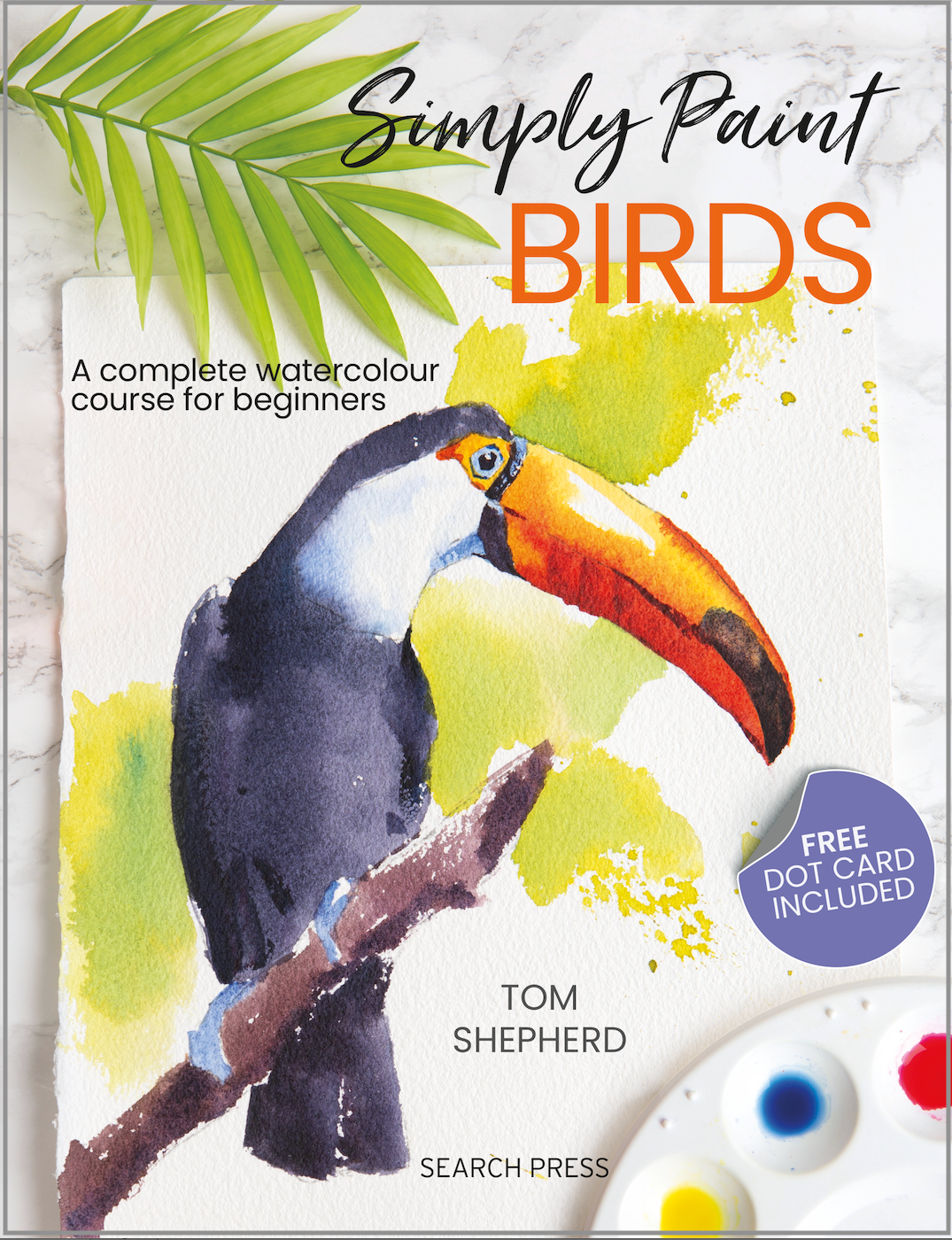
Why did you choose birds for your how-to book?
Besides drawing, my other love as a child was wildlife, in particular birds. I could not wait to get home from school so I could draw and flick through bird books. Believe it or not my first word was bird, so looking back, painting them seemed inevitable. Having said that, I love painting a huge range of subjects. They are all really just an excuse to pick up the watercolours and have a play.
I return to birds as I am so captivated by their character, movement, and colours. Trying to capture those often elusive, fleeting moments with them, whilst challenging, is also very rewarding. I also feel the free flowing and immediate nature of watercolour makes it a fantastic medium to do this with. As long as we don’t fuss, there is a freshness and a lightness to watercolour that I believe lends itself to the lightness, movement and freedom that birds evoke. It seemed the obvious choice for the subject of my first book, but also they are a great choice to illustrate many of the key principles and elements of watercolour.
As a subject, they include simple, easy to understand shapes. Some areas allow for a little less accuracy, whilst faces and beaks provide areas where we can hone our observation and accuracy skills. They provide endless colour options – from learning to mix muted soft greys right through to handling bold, high saturated colours. Birds show off light and shadow in a fascinating yet relatively easy to understand way; fantastic for learning how to paint simple shadows, creating form and depth.
We can tackle birds in an incredibly simple way, perfect for those who are just beginning their painting journey, or for those moving to watercolour for the first time. Yet as a subject they are so broad and have so much subtlety, they also provide a lifetime’s pursuit for those wishing to progress their watercolour painting. Then, there are so many people out there who love birds and would like to start painting, so they seem to go hand in hand as a perfect match.
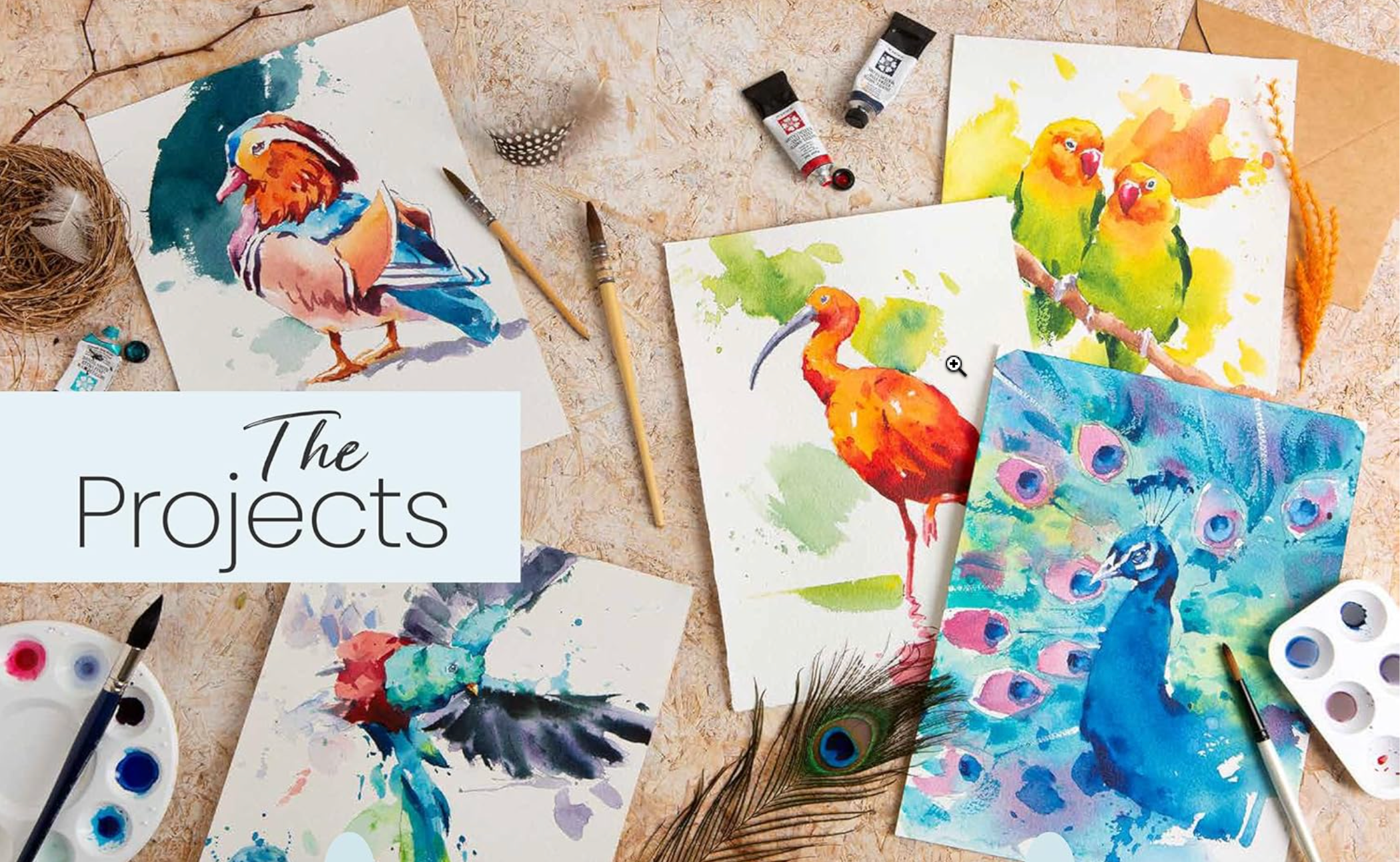
Which of the techniques that you share in your book have rendered the biggest “a-ha” moments with your students?
Firstly, changing the way we look at our subject – learning to look as a painter, even if you’re starting out. This means learning to see shapes, then paint shapes, trusting ourselves and trusting the process. While this takes some work and a bit of brain reprogramming, it is possibly the biggest and most useful area to focus our time.
In practical terms of the watercolor medium, I really believe that if people focus on getting to grips with paint consistency, it is time extremely well spent. This is the most unique element of watercolor. How does the mixture on your palette feel – is it very watery, milky, creamy or thick? How do these different consistencies feel and behave as you lay them on the page?
Play, play, play and play more. Get to know your paints and your brushes. It doesn’t need to be complicated and you don’t need to take endless notes – simply feel it! Beyond this, it is the interaction between the above paint consistency on your brush and how wet the page is. You can read and watch about it – but there is no substitute at all for simply experimenting and playing. The quicker you can get a feel for this, the quicker you progress with watercolor! I believe it is the key to everything else – from tonal values and color mixing to brushwork and edges.
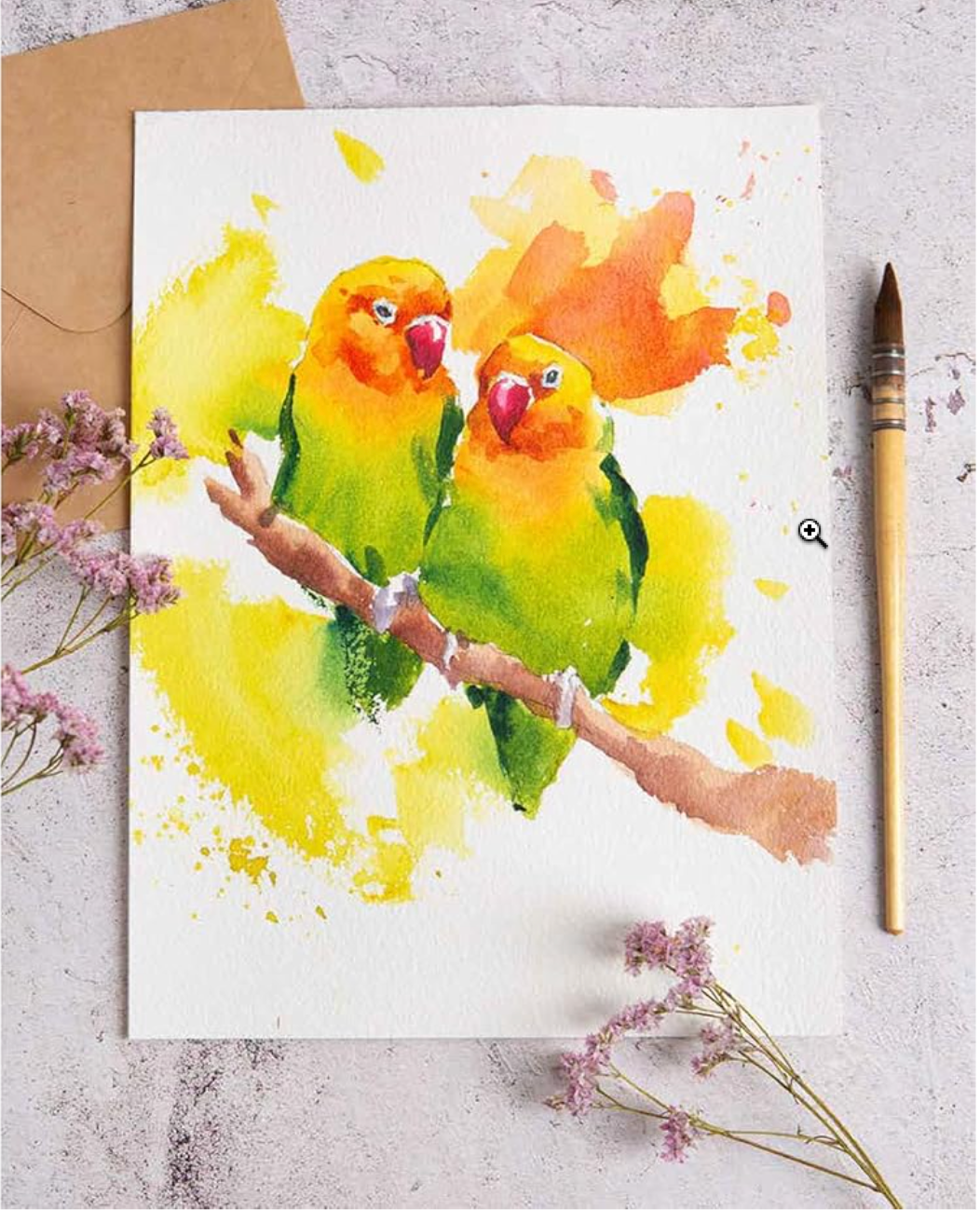
What kind of bird is your favorite to paint?
I have probably painted more flamingoes and bee-eaters than any other bird. Whilst I love them, they are not necessarily my favourite birds. As a painter, I find there is something about them I cannot get away from. With flamingoes in particular, I feel like I am forever chasing the perfect flamingo color, and they keep me coming back to try again! In terms of my favourite birds, I have always adored macaws – so much color and character. They were made for painting if you love color and wet in wet work with bold washes and brushstrokes.
The family of crows (choughs and ravens being my two favorites) I also find extremely intriguing. Not only their intelligence, symbolism and character; but trying to represent all of the colours and nuance in a seemingly black bird keeps me very interested, as does attempting to capture this in an engaging and loose way. Then finally – owls, particularly tawny owls. Beautiful birds, often hard to spot. I keep coming back to try and capture the subtle muted colours alongside their wonderful markings. Again, trying to do so in a loose and expressive way – a way which finds that balance between being sensitive to the subject whilst still amplifying, exaggerating and accentuating the features.
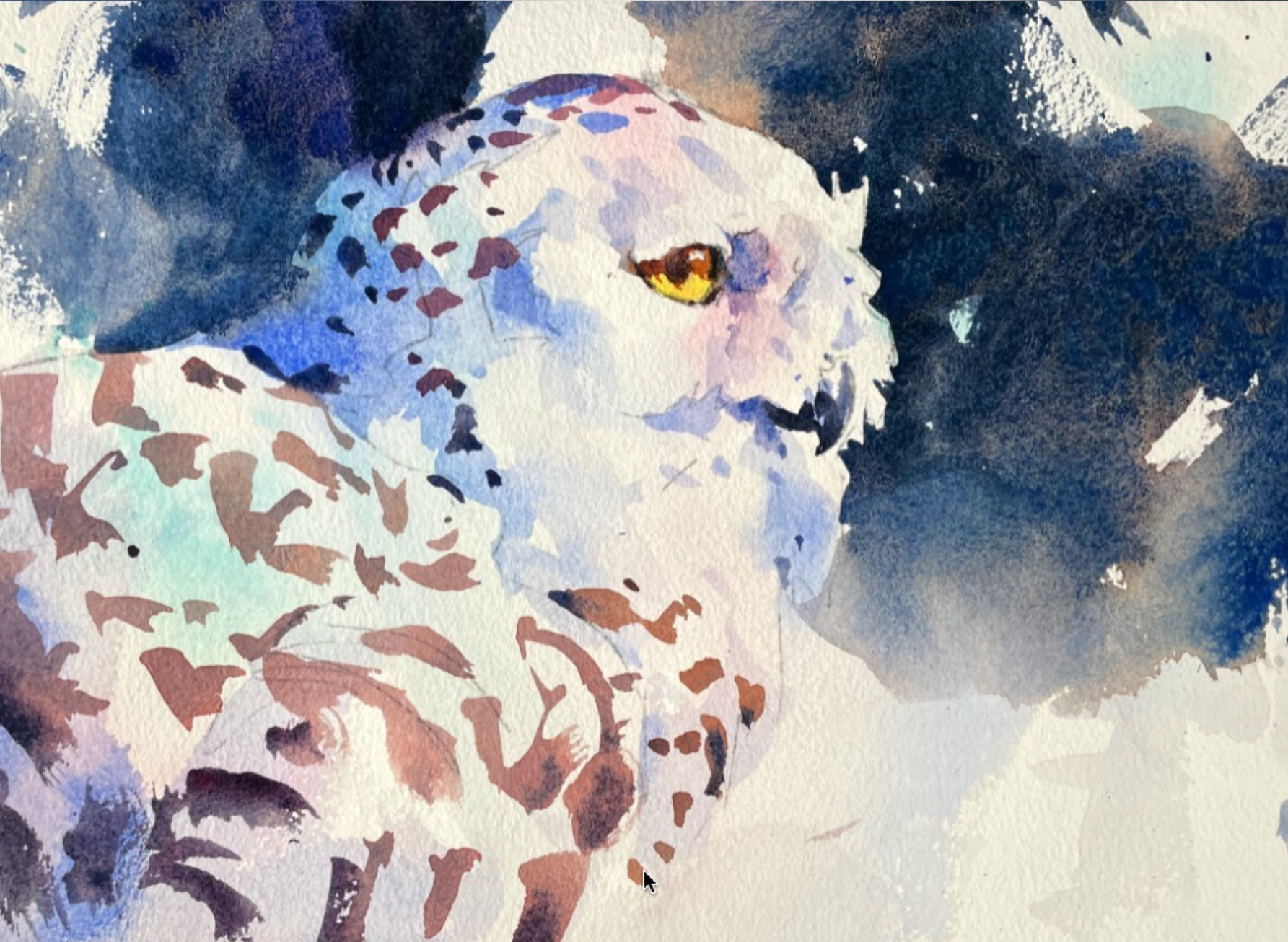
••••••••••
Join us online each week via Zoom or Facebook for an Up Close and Personal Conversation with John Cogley (Daniel Smith Owner and CEO) along with guest artists from around the world. On Thursdays (2:00pm Pacific), John and some of our Brand Ambassadors highlight a group of colors and answer your questions. On Fridays (10:30am Pacific), a guest artist shares a demo with their favorite tips and techniques. Click here for the upcoming week’s Zoom links.
If you prefer, you can visit our Facebook page at showtime to watch live. Replays can be watched on Facebook or YouTube.

